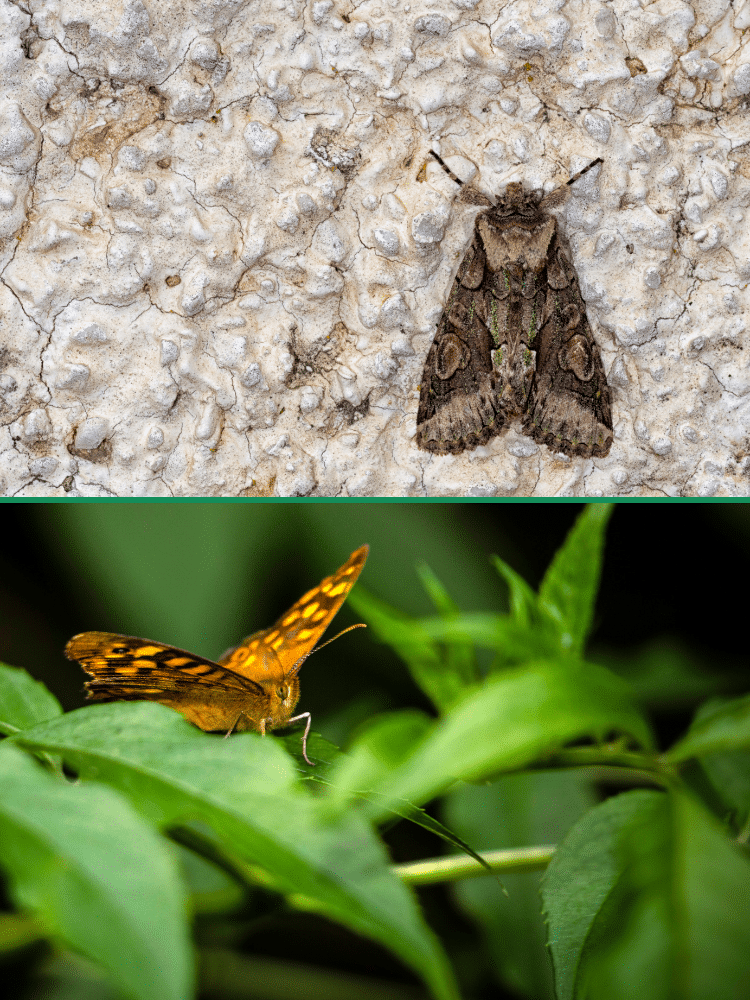When we think of a bumblebee, we tend to picture a round, large, furry blob buzzing from flower to flower. While the fuzziness makes the bumblebee seem especially cute and friendly, what is it? Do bees have fur or is it something else?
Bees do not have fur, even though they have a furry and fuzzy look to their bodies, the fur is actually hair! Bees, including bumblebees, have branched body hairs that help the bees collect pollen, detect wind direction, help with feeding, and more.
Bees with lots of hair, like bumblebees, also benefit from using their body hair to keep themselves warm in cool and damp weather.
What is the Fur on a Bee Called?
Bees do not have fur, even though they look like adorable little puff balls. Instead of fur, bees have large patches of hair over their bodies. This includes hair on their main body, feet, eyes, and tongues.
Yes, bees have hairy eyes and tongues!
In most species of bees, the hairy patches of bees are called corbicula. In other species of bees, like honeybees, the hairs are known as scopa. Both of these hairs can be found on the legs of bees.
Scopa is made up of a large number of hairs in one place on the body, generally found on the back legs of the honeybee.
With the help of other mechanisms in the honeybee’s anatomy, pollen is pressed down and condensed into a small package and then kept in the scopa to allow for more pollen storage on the bee.
Want to Attract Bees to Your Garden?
We’ve Put Together a Complete Guide to Attracting Bees to Your Garden Including Our Top 14 Plants You NEED to Have in Your Garden:
Do Bees Shed Hair?
Bees do not shed their hair like dogs or other mammals throughout the seasons. Bee’s hair is not like animal fur, but instead long, thin, and strong hairs that help collect pollen and help direct the bee.
As bees go through the season, they will continuously visit flowers collecting pollen.
Thanks to their millions of hairs, bees are able to collect a large amount of pollen at one time before heading back to the hive to clean themselves.
As the bees remove the pollen from themselves, hairs can fall off. Bees can also lose hair bumping into flowers or in intense storms.
Sometimes, if a bee gets sick or catches a parasite, it will begin to lose its hair. However, bees will not shed their fur as a way to stay cool in the summer heat nor will they grow more hair to take on the winter.

Why Do Bees Have Hair?
Bees are considered the most vital and important pollinators in the world. It is easy to see why when we consider that the bee is anatomically perfect for pollinating plants.
Honeybees have over 3 million hairs on their bodies and the hair on their head and the hair on their legs all serve very different purposes.
The main use of honeybee hair is to collect and carry pollen. When a bee goes from flower to flower to collect the pollen, it sticks all over the bee.
The back legs of the bee have a pollen sac and a unique feature that allows them to condense large amounts of pollen into a compact carrying option.
Honeybees are furry all over. In fact, even their eyes and tongues have hair!
Bees have 5 eyes, which is already unusual in itself. The two true eyes are located on either side of the head and are oval-shaped. The other three eyes are on top of the bee’s head.
These eyes do not see but instead, sense light. It is also thought that these eyes help the bee navigate while flying. The hair on these eyes helps the bee understand where it is.
The hairy tongue of a bee helps it eat and slurp up all the delicious nectar and pollen from plants and flowers. Helping the bee receive the proper nutrients is important when the bee is flying 5+ miles a day collecting pollen.
Yes! Bees have hair on their eyeballs. The eye on their eyeballs is just another way to collect pollen but also enables them to detect wind direction.
Yes, bees have hairy legs. If they have a body part then chances are it is covered in hair so that they can efficiently collect pollen. Pollen will stick to any hair on a bee’s body.
Summary
While we may mistake honeybees and bumblebees as furry little creatures, the fur we see is actually hair. Honeybees have more than 3 million hairs along their bodies. These hairs all provide different benefits for the bee.
All hair is vital for collecting pollen and carrying it back to its hive. However, the hair also serves purposes of navigation and regulating body temperature.
Bees are complex and unique creatures that are perfectly designed to be the world’s best pollinators and having hairy bodies is just another anatomical feature that helps them achieve that status.
Honeybees and other bee species have developed over time to create the ideal body for the environment. Hairy bodies help provide warmth in the cool spring and cold autumn as the flower season comes to a close.
In addition to the other important features of bee hair, fur makes the bees easily identifiable to humans. This allows humans to help support bee colonies and know if they need to call a beekeeper or an exterminator if an infestation takes place.







